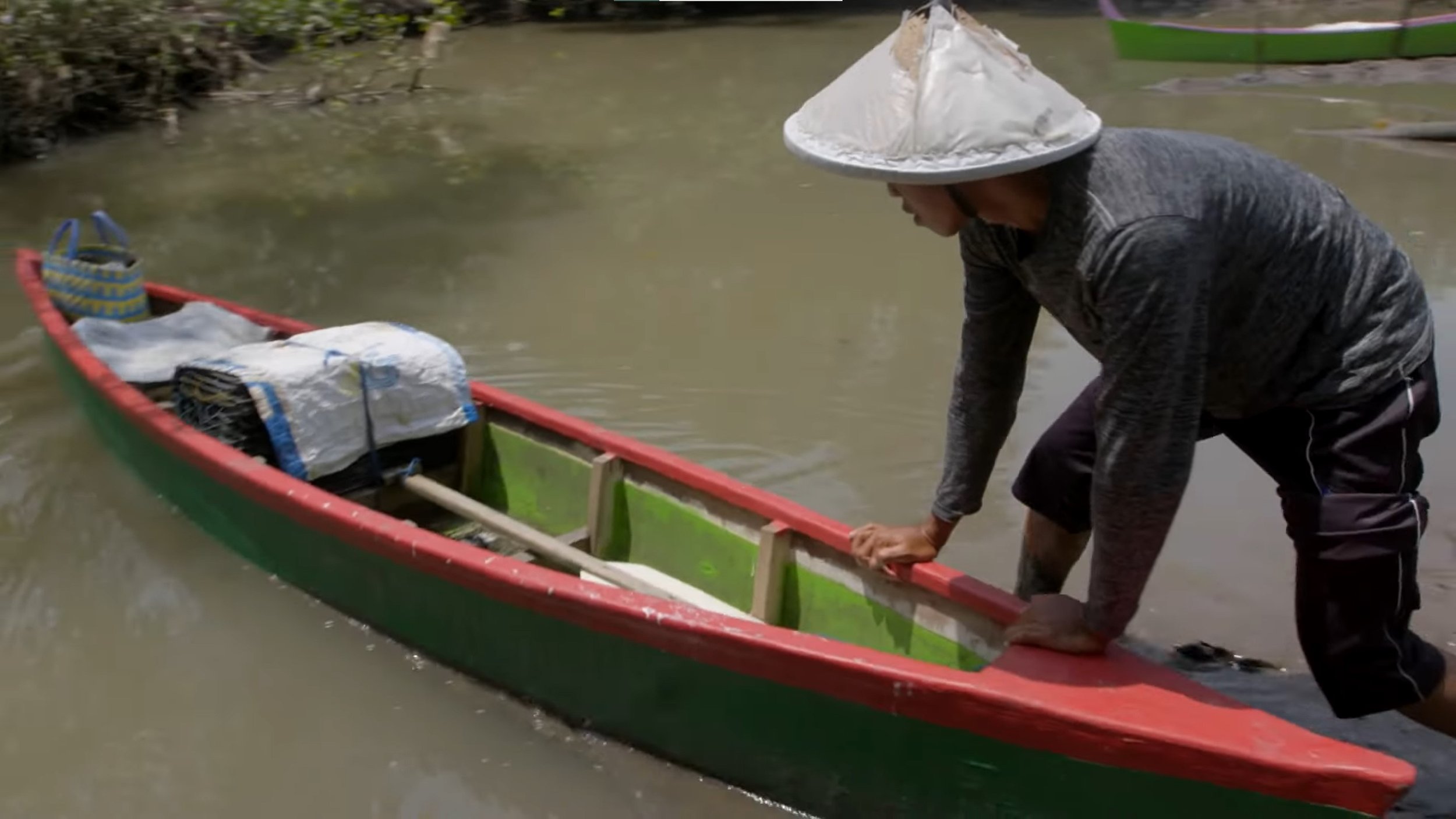In 1980 in Pangpang Bay on the island of Java, Indonesia, fishing communities believed they could make a better living by growing fish, crabs, oysters, and other bivalves in aquaculture ponds. The rich bay was covered in mangrove forests which had to be cleared to make way for the ponds.
Yet over time, the role of mangroves as crucial fish and crustacean nurseries became clear when the ponds became unproductive after years of erosion ruined critical dikes and fish stocks declined.
In 1990, resident fishing communities began to replant the mangroves themselves and nature began to show itself as more productive than the artificial equivalent.
“In the past, when mangroves were not dense enough, you could earn only 50–60 thousand rupiah [around USD 3.4] per day,” Eko Siswanto, a local crab fisher told Erin O’Connell reporting for Forest News. “But as they grew more dense they attracted crabs—which allow us to earn more. Now, our income has risen to 90–100 thousand rupiah, sometimes as high as 300–400 thousand”.
Forest News conducts journalism alongside the science teams from the Center for International Forestry Research, and spoke to other local aqua-entrepreneurs, who expressed their preference for the shorter hours and independence of traditional fishing over other kinds of labor.
Additionally, the bounty of fish and other aquatic life acts as a real boon to the community’s nutrient intake. Packed with omega-3 fatty acids, which are important for everything from cognition to body mass control, as well as protein and vitamin B12, fish, crustaceans, and mollusks are exceptional food sources for all age groups, and are especially advantageous for childhood development.
“Mangroves provide direct, daily benefits to local communities,” said Amy Ickowitz, who studied Pangpang bay nutritional intakes for CIFOR. “Particularly for poor communities, the nutritional contribution that these fish can make to local diets can be key for preventing malnutrition”.
No place like it
For decades, the inhospitable nature of mangroves for humans meant that few tears were shed upon their removal. Prior to 1996, mangrove forests were believed to have experienced rates of deforestation greater than potentially every other forest biome on Earth. Since 1996, global mangrove loss has totaled an area of about the size of the US state of Delaware.
In the last few years though, attitudes towards the swampy tangled forests have changed. Between 2010 and 2022 the rate of loss dropped by 600%, to just 66 km2 per year, or 0.04% of the world’s total coverage, making it among the world’s least disturbed forest biomes.
Indonesia comprises a fifth of the world’s total mangrove forest cover. The quality of the mangrove ecosystems there is also better than in other countries, with the soils containing a higher percentage of carbon—estimated to be 1.6 billion metric tons.
Additionally, mangrove restoration in Indonesia is potentially as high as 2,000 km2, about half as much as has been lost worldwide since 1996. WaL
PICTURED ABOVE: Crab fisherman Eko Siswanto prepares to go crabbing. PC: CIFOR, retrieved from YouTube.
If you think the stories you’ve just read were worth a few dollars, consider donating here to our modest $500-a-year administration costs.



